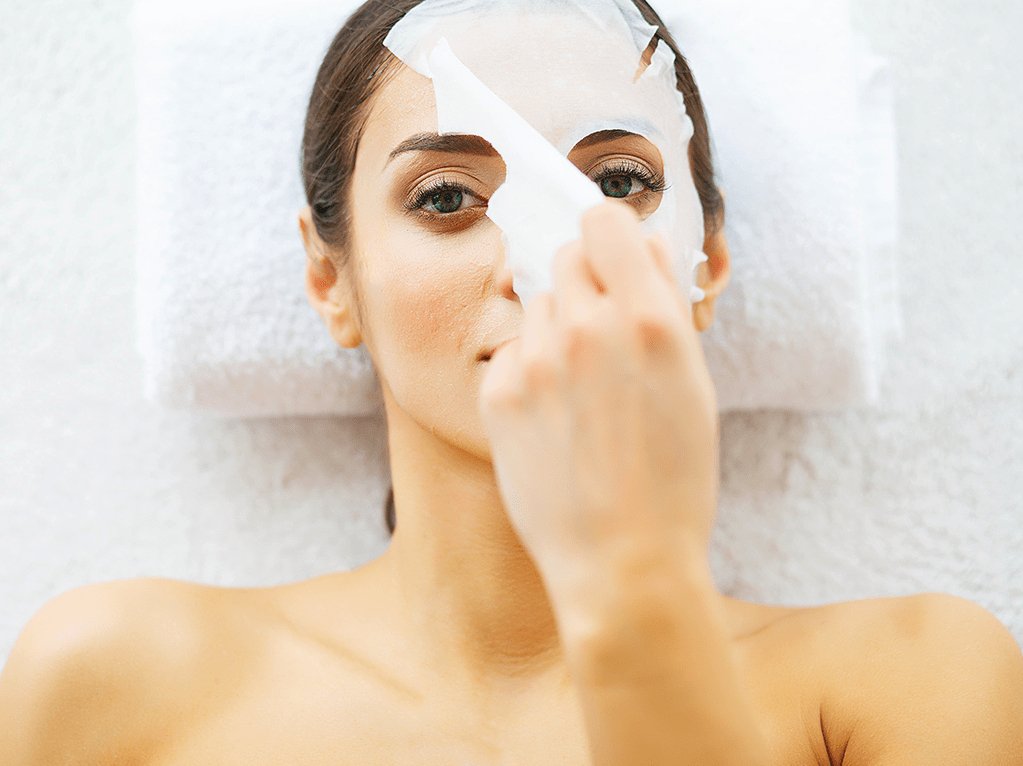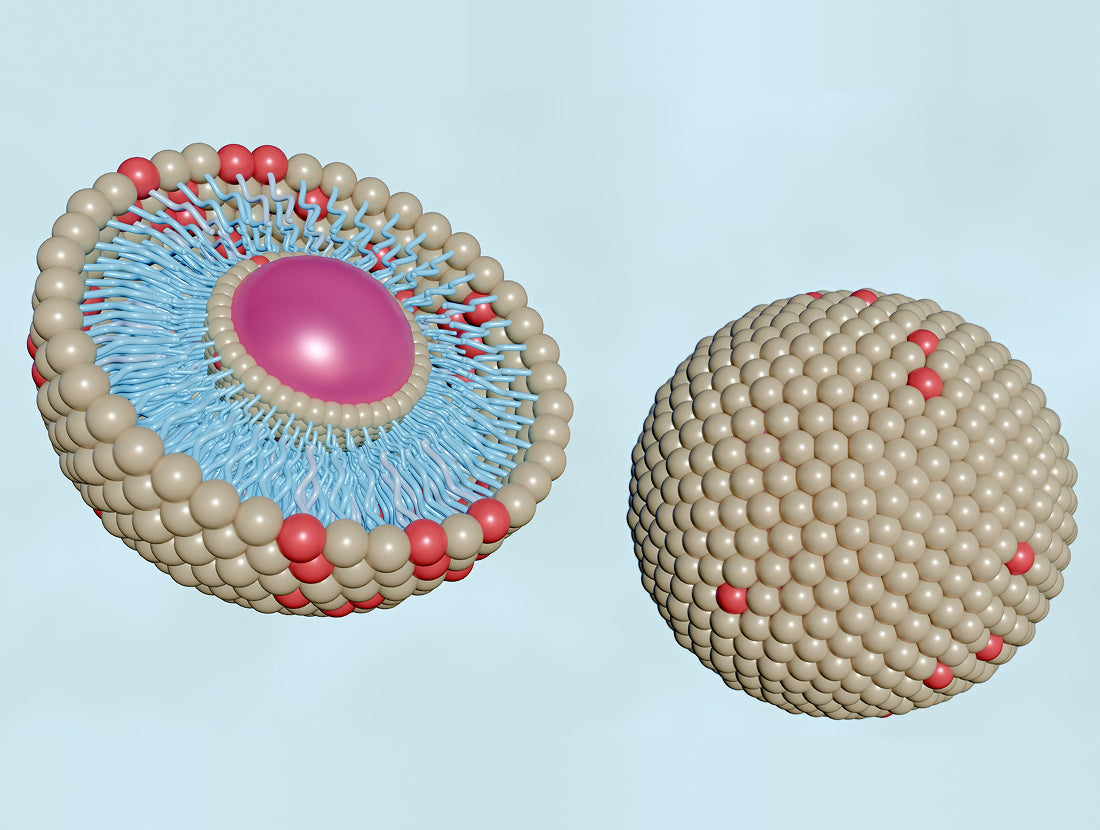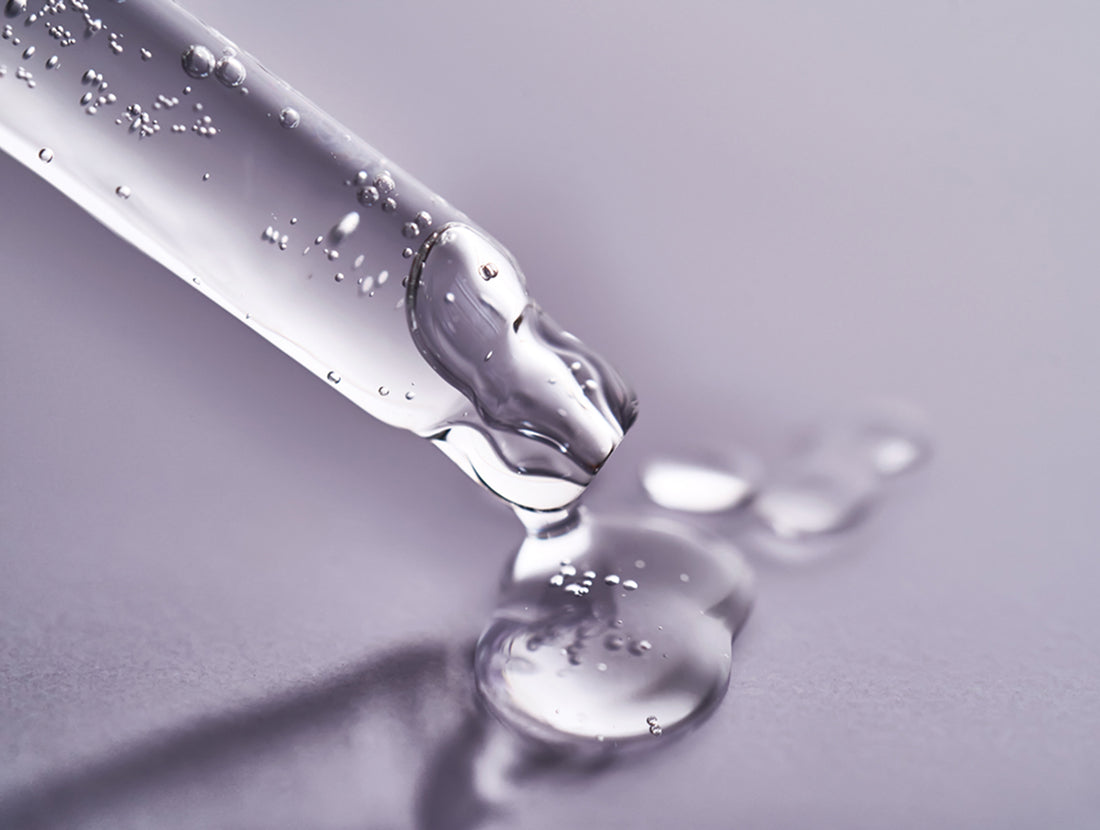What is Acid Exfoliation?
Acid exfoliation is the most common and well-known type of exfoliation. While extremely effective, it is a type that is easy to overuse and is the most susceptible form to user error. The two primary types of acid exfoliation are Alpha Hydroxy Acids (AHAs) and Beta Hydroxy Acids (BHAs).
Many skincare users either use the wrong type of acid for their skin type, causing a reaction resulting in the discontinuing of acid use altogether; or they use too many formulations at once (many treatment products, even if not specifically marketed as an exfoliant, have some type of acid, so it’s easy to unknowingly stack many within a single routine), or use too strong of acid products that compromise their skin barrier. Both incompatible products and overuse are equally detrimental to the skin.
Currently, exfoliating acids are seen everywhere in the marketplace – and for good reason! You can find strong acids on shelves of department stores, physician offices, and in drugstores. Why is this? First, they are clinically proven ingredients that work for a variety of skin issues ranging from acne to wrinkles. Furthermore, they are relatively inexpensive ingredients, so it doesn’t cost much to add them to a product’s ingredient deck. However, not all acids are created or formulated equal. The acid type used is only as good as the formulation it sits in. Also, there are now a plethora of ways that acids are formulated, utilizing varying patented transportation systems. You will see ‘encapsulated’ acids, which are used to time-release the acid in small doses over a longer period of time. In this way, it reduces side effects from acid use which is a plus as it allows the user to incorporate more treatment products without over exasperating the skin for maximum benefits.
How to Choose an Acid
When choosing acids, it is best to focus on percentage and pH. These two factors are what determines how ‘strong’ the acid will be. If you are new to acids, it is important to start with a lower percentage acid with a higher pH. The percentage of the acid is typically listed on the product packaging or website. However, the pH of the product can sometimes be harder to find. When it is unknown, choose one that says it is ‘gentle’ or for sensitive skin. A good and normal acid pH is typically 3-4. The pH level of various acids will play a large role in the good and adverse effects of acids.
How to Apply
Consumers need to make sure they are aware of the acids in their skincare and choose one from a trusted brand or a clinically proven product. Also, make sure that you are not layering acids that are not meant to be used simultaneously. Sometimes using too many acids can cause superficial burns or degrade the skin’s barrier. Other times, using acids with various serums and active products can make the product ineffective. There is no point in spending $300 for a serum that is rendered ineffective due to the acid applied before or after. When in doubt, consult a skincare professional or use products that are formulated or know to be used together. Also, it is recommended not to use an acid in the same routine as an active serum.
When to Apply
When an ingredient can cause you to burn from standard sun exposure it is known as being photosensitizing. There is much debate on the photosensitivity of acids, and that debate is often centralized in when you should apply certain acids. Historically, it has been advised to use acids exclusively at night, due to the fact they can cause this sun sensitivity or photosensitivity, ultimately contradicting the application of skincare as it will increase the rate of skin aging. However, some modern acids, like Poly Hydroxy Acids (PHAs) do not cause the same sun sensitivity as their predecessors - AHAs & BHAs - due to being a less aggressive acid.
Another modern debate of acids lies in whether they themselves are actually photosensitizing to the skin. The debate can get lengthy, but the main take away is that the acid itself may not cause sun sensitivity, but rather the side effect of strong acids on unexfoliated skin can strip the skin of a natural SPF (the dead skin layer) and cause some to burn more easily. Typically, it is still widely advised to use acids at nighttime, unless the specific product or manufacturer states otherwise.
Types of Acids
Currently, AHAs & BHAs are ingredient types used the most in skincare and are in almost every category of product, including cleansers, masks, moisturizers, serums, and even alongside retinols. Consequently, the overuse of acids is increasing as well. It is important to be mindful of the skincare ingredients in your products and try not to use too many sequential steps containing various acids. For example, you wouldn’t want to use an acid cleanser, toner, serum, and/or moisturizer all in the same routine. A good rule of thumb is to incorporate an acid product in either your morning or nighttime routine 3-4x/ week and build up to once a day. Some thicker, less sensitive skin types can tolerate multiple exfoliating ingredients in the same routine, but a lot depends on the strength and pH of the products being applied..
Alpha-Hydroxy Acids (AHAs)
AHAs are used for a wide variety of skin concerns, and they are a powerful tool for skin health and anti-aging. However, they are probably the most overused acid in skincare. These acids include glycolic, lactic, tartaric, citric, mandelic, and malic acid. AHAs are extremely beneficial to the skin and can be tolerated in small quantities by most all skin types, excluding those with extremely sensitive or dry skin.
Beta-Hydroxy Acids (BHAs)
Most notoriously used for acne, BHAs are a powerful tool that clears out pores by absorbing oil and removing dead skin cells. However, BHAs are also good at combating hyperpigmentation and rosacea. The most primary form of BHA used in skincare is Salicylic Acid which is derived from willow bark. The percentage of Salicylic Acid should be between .5%-2%. Some products will contain higher percentages, but unless known to be formulated gently, I wouldn’t exceed a 2% BHA.





